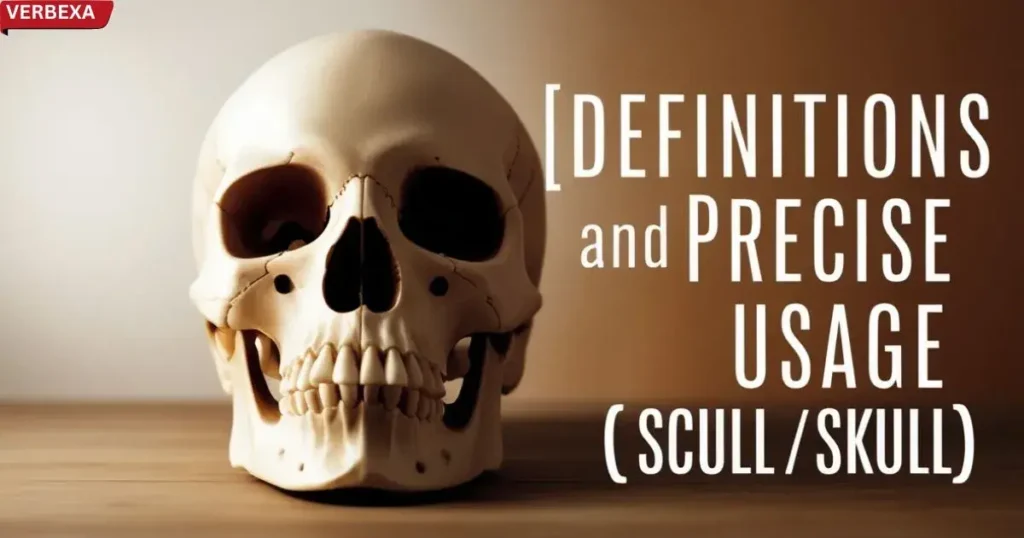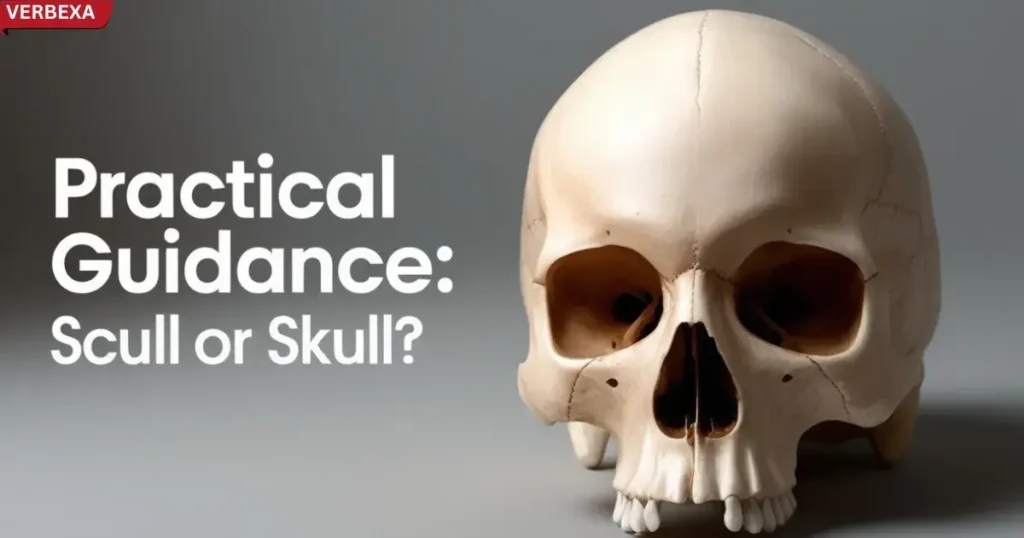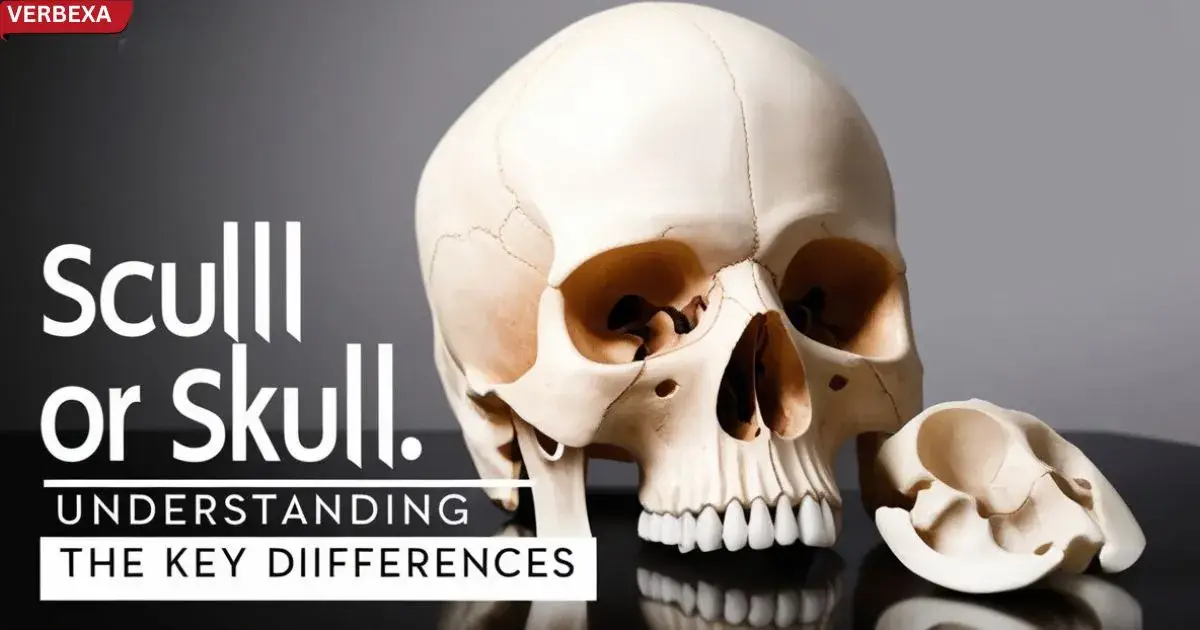Have you ever found yourself puzzled by the terms scull and skull, wondering if they’re the same word or completely different concepts? These easily confused terms might sound similar, but they couldn’t be more distinct in their meanings and usage. Whether you’re a rowing enthusiast, a medical student, or simply someone who loves language, understanding the nuanced difference between scull or skull is crucial.
Imagine you’re reading a sports article about rowing, and the text mentions a scull, or you’re studying human anatomy and encounter the term skull. The context might leave you scratching your head, wondering which word is correct. This article will be your definitive guide to distinguishing between these two intriguing terms.
Key Takeaways
- Scull relates to rowing and boats
- Skull refers to the bony head structure
- Context is crucial in determining the correct term
Definitions and Precise Usage

Scull: More Than Just a Word
A scull is primarily associated with rowing, specifically referring to:
- A type of rowing boat
- A rowing technique where each rower uses two oars
- A specific method of propelling a watercraft
Example: “The Olympic athlete practiced her scull technique on the calm lake, mastering the intricate movements of her dual oars.”
Skull: The Protective Bony Structure
A skull is an anatomical term that represents:
- The bony structure encasing and protecting the human brain
- A critical component of vertebrate anatomy
- The primary protective shell for cranial and facial structures
Example: “The forensic archaeologist carefully examined the ancient skull, tracing its evolutionary characteristics.”
Synonyms Exploration
Understanding synonyms can further enhance our grasp of scull or skull.
Synonyms for Scull
- Rowing boat
- Double-oar craft
- Sculling vessel
- Rowing shell
- Racing boat
- Competitive watercraft
- Oared boat
- Rowing implement
- Water racing vessel
- Nautical propulsion craft
Skull Synonym
- Cranium
- Braincase
- Cerebral housing
- Head bone structure
- Cephalic framework
- Osseous head protection
- Skeletal head cover
- Cranial vault
- Bony head shell
- Neurological protective casing
Comprehensive Comparison Table: Scull vs Skull
| Aspect | Scull | Skull |
|---|---|---|
| Definition | Rowing boat or rowing technique | Bony head structure in vertebrates |
| Primary Context | Sports and Water Activities | Anatomy and Medical Sciences |
| Usage in Sentence | “She perfected her scull technique” | “The skull protects the brain” |
| Associated Fields | Rowing, Water Sports | Medicine, Biology, Archaeology |
Practical Guidance: Scull or Skull?

Choosing Scull
Use scull when discussing:
- Rowing techniques
- Boat types in competitive sports
- Nautical activities involving specific rowing methods
Selecting Skull
Employ skull when referencing:
- Human or animal anatomical structures
- Medical or biological discussions
- Protective bone structures of the head
Everyday Usage Examples
Scull in Context:
- “During the regatta, the team practiced their scull technique meticulously.”
- “Professional rowers often prefer a lightweight scull for competitive racing.”
Skull in Context:
- “The human skull consists of 22 bones, providing critical protection for the brain.”
- “Archaeologists carefully excavated the ancient skull, revealing insights into prehistoric life.”
Common Misconceptions: Scull or Skull

Many people mistakenly interchange scull and skull, but understanding their distinct meanings prevents communication errors. Remember:
- Scull: Water and rowing related
- Skull: Anatomical and protective structure
Conclusion: Mastering the Scull vs Skull Distinction
Understanding the difference between scull and skull is more than a linguistic exercise—it’s about precise communication. Imagine mistakenly referring to a rower’s “skull” instead of their scull head during a race commentary; the error would be jarring and confusing. Whether you’re discussing rowing techniques, where a skull is the bony structure of the head, using these terms correctly demonstrates linguistic precision and subject knowledge.
The potential for miscommunication is high when dealing with scull or skull, highlighting the importance of understanding their distinct meanings. A clear grasp of the difference between scull or skull significantly enhances both written and spoken communication, preventing ambiguity and ensuring accuracy. Using “scull head” is incorrect; the term “head” is sufficient in the context of rowing.

This author is a passionate linguist and grammar enthusiast, dedicated to helping individuals master the art of language. With years of experience in teaching and editing, she brings clarity and precision to every sentence. Tina’s mission is to empower writers of all levels to express themselves with confidence and excellence.

